14 Types of Saunas to Promote Perfect Relaxation
Author: Rick Worst | Editor: Omar Alonso
Review & Research: Jen Worst & Chris Miller

The sauna tradition is spreading more and more, and different types of saunas have emerged to meet various expectations of people seeking relaxation and a refreshing experience. The sauna practice originated in the Nordic countries. It's a social and family tradition very popular with the Finns.
Traditionally, the sauna is a wooden hut in which one takes a bath of dry heat that comes with several health benefits backed by extensive research. Cultures have used it all over the world for centuries.
But the types of saunas all over the globe that we found are more than interesting. Don’t worry; we’re just about to get started on the names.
14 Types of Saunas
Saunas were invented by the Finns over 2000 years ago as baths, and even as places to give birth. Fast forward to today and we have many variations, still powered by burning wood or even electric options. You can find exactly what you want these days, built to custom sizes.
The variety of saunas and attributes unique to each should be considered for individual health demands and concerns. Several models have developed over the ages based on different aspects like heat source, region, design, and bench tiers. Let’s get them introduced to you.
Traditional Steam Sauna
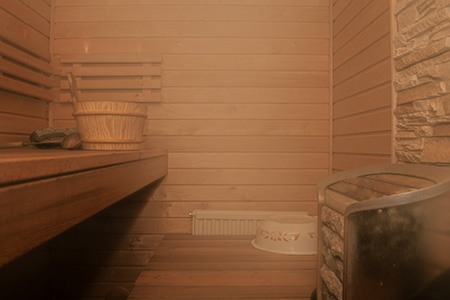
This sauna is built out of wood and is the most popular one. This sauna’s heat is produced either by a wood stove, an electric stove, or a gas stove (pretty much any types of stoves), which heats volcanic stones.
By pouring water on these stones, heat is produced, with temperatures reaching up to 100°C. Sauna manufacturers most often offer standardized models of cabins, but it is possible to build a custom-made sauna. The size of a traditional sauna can vary from 1 to 8 seats.
Infrared Sauna
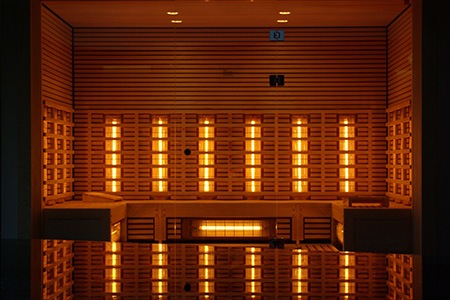
These sauna types concept is recent and comes from Japan. Infrared heating elements replace the stove. This would cause sweating three to six times greater than a traditional sauna.
While the conventional sauna heats the air, 80% of the radiation penetrates deep into the skin tissues. The ambient temperature is around 50 °C. Clearly, the heat is more bearable in an infrared sauna.
Easy to install and connect, these sauna options look like a traditional sauna. Its operation changes on the way of heating, and the partitions of this sauna emit infrared radiation, similar to that of the sun.
The sauna temperature is lower than a steam sauna and is drier. But how much is the temperature? Well, that doesn’t exceed 60°C.
Dry Sauna
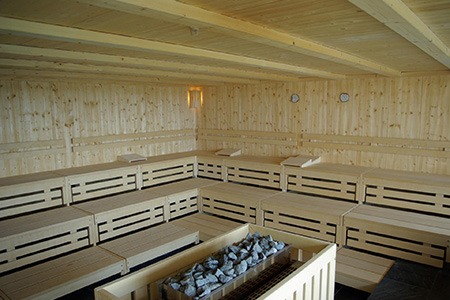
The next one on our list is a dry sauna. This type comes with a hot room that can get heated with a wood stove, electric, or infrared heater. You can even craft a lower cost (but probably less effective) one using a space heater or one of the space heater alternatives.
Compared to the other saunas, this one uses less heat which is around 140° F. There’s no major difference in the building process of this one, but from a technical standpoint, a dry sauna is built a lot like other saunas.
But if you’ve got issues with respiratory system functioning, looking for a way for clearing up your cold or flu symptoms, don’t think of trying the dry types of saunas. You'll want more humidity in the air.
Wet Sauna
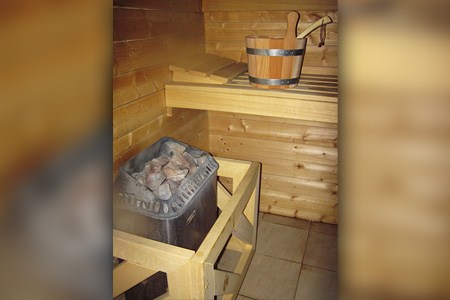
Let’s call wet sauna the dry sauna but working in a little different way. The overall design and construction are the same.
But the difference is you can pour water over the heating element or hot stones, which will create steam to make the room hot and humid. If you’re asking for a faster sweating process, then pick this one.
Shower Sauna
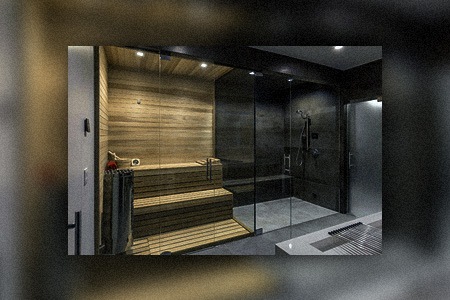
It is also known as the combined sauna or the hammam sauna, which will fit perfectly into a bathroom. A complete piece of wellness equipment between sauna, hammam, and shower, this model will require less work than a traditional sauna and is a significant space saver.
Shower saunas usually have a hammam option: enough to relax by all means. With sauna types of showers, all uses are possible. In addition, the shower is often equipped with massage hydro jets.
Finnish Sauna
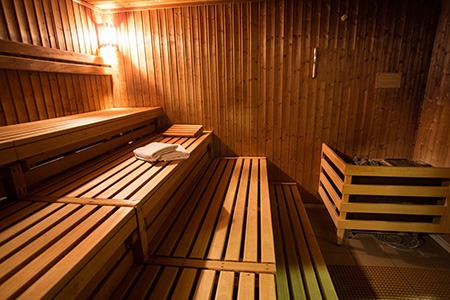
Well-being is no longer an empty word in a Finnish or traditional sauna. Enjoy the heat delivered by the wood stove and eliminate your toxins through sweating. In Finland, the sauna is a moment of relaxation and well-being to share with friends or family almost daily.
The Finnish sauna was introduced as an outdoor sauna in the form of a small house installed in the garden or by a lake. This sauna practice is still widespread in Finland today.
The traditional Finnish sauna is a cabin made entirely of wood; the door can be made of thick glass. It is equipped with a wood or gas stove to heat the cabin. The temperature varies from 70 °C to 100 °C with a humidity level between 15 and 25%, which accelerates the heart rate.
Electric Sauna
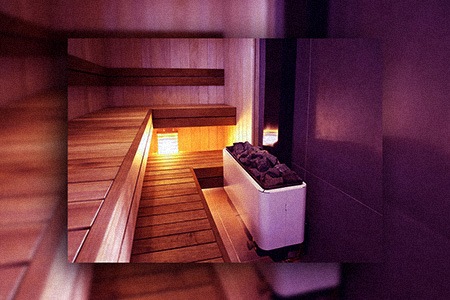
This type of sauna works with an electric stove on which volcanic stones are placed. It has the advantage of quickly rising in temperature and is also easy to stabilize.
This kind of sauna will give you the aesthetic vibe and is also too easy to use as you don’t need to do a lot of things manually. So, you can save some time there too.
On top of that, these different types of saunas reproduce the effects of a traditional sauna but with the disadvantage of consuming a lot of energy. So, it might be a little heavier on the wallet, but when it comes to performance, it’s no less than any of the finest saunas out there.
Bio Sauna
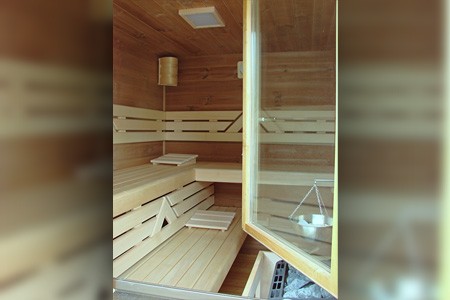
The bio-sauna is a softer alternative to the traditional sauna. It balances the temperature and humidity. The temperature level is between 50 and 60 ° C, and the humidity is between 20% and 60%. For this, an evaporator was added to the stove to diffuse steam in the cabin constantly.
These sauna options are recommended for people who have difficulty breathing in a traditional sauna. The benefits of the body remain the same.
Outdoor Sauna
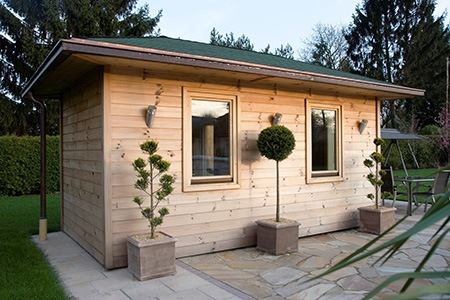
These sauna types looks like a garden shed that can give a Nordic tone to your exterior. It’s the kind of sauna that is best when it’s installed near a water point like a lake, river, swimming pool, or any types of hot tubs (but be careful not to overheat yourself).
It can come in different forms: a two-sloped roof, a flat, cube-shaped roof, and even a barrel-shaped sauna. When it comes to the heating system, you can use anything like wood, gas, electricity, or you can go for an infrared heating system as well.
The wood-burning sauna should definitely be built outside so that you don't release smoke indoors. But do question whether or not your neighbors will have an issue with the smoke, too. Building it directly on whatever types of patios you have will help offer privacy and comfort.
Russian Sauna or Banya
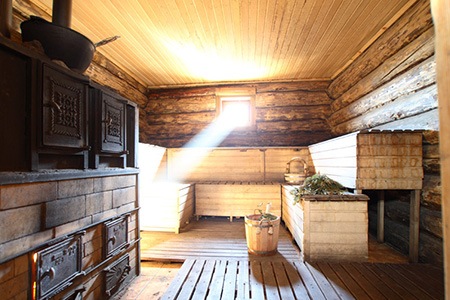
Banya is like the traditional sauna, but the Russian edition is also quite popular in England and across the Atlantic. Steam in this sauna is generated by spraying water on heated stones or brick stoves.
The hotter the stones, the drier and lighter the steam is. Like the Finnish sauna, the banya was originally made entirely of wood.
Unlike the Finnish types of saunas with their dry heat, the Russian sauna, also called banya, is a hot steam bath. Some refer to it as a Turkish bath. But the ritual is similar to the hot/cold alternation. In the Russian sauna, you heat up the body first. Then you use cold water to put down the temperature.
The process is repeated two or three times. Tradition has it that we whip ourselves with dried branches to cleanse and soften the skin, activate sweating, and blood circulation.
Foldable Sauna or Portable Sauna
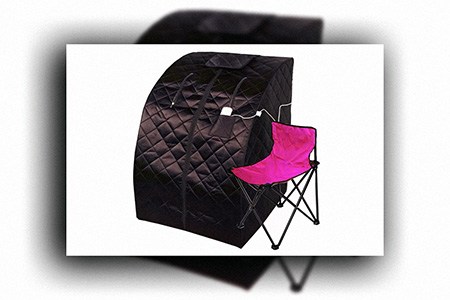
It can only contain one person at a time. Unfolded, it looks like a large PVC bag letting the head and hands protrude. Folded up, it takes up no more space than a suitcase.
Due to being lightweight and convenient, you can take it anywhere. So, if you’re worried about not having enough space for the sauna or missing out on your sauna session when you’re on a trip, this one can be an effective solution. By the way, it needs to be connected to an outlet and works with infrared energy.
Nano Sauna or Facial Sauna
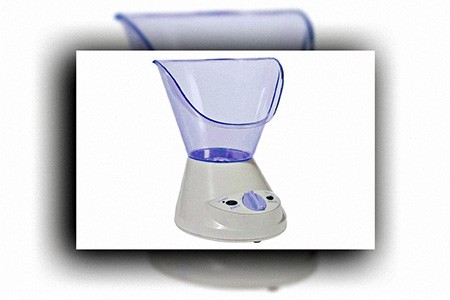
These sauna options are steam devices that can only perform a facial, neck, and décolleté treatment. The benefits of the traditional sauna can be applied to these body parts using this one as the pores open to purify the skin and moisturize it.
Here, the best part is the skin becomes softer and more flexible. The nano-sauna sauna types are an excellent tool to fight acne or eczema.
Sweat Lodge
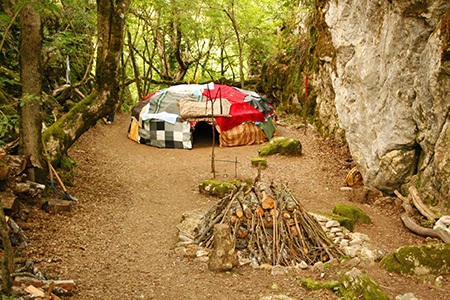
Have you ever heard of sweat lodge? Well, it might look like an ancient cave or some tribal home, but it actually is a sauna.
Getting the heat from heated rocks, this one too works in the same way as any of the regular saunas. All you need to do is pour some water on the rocks to bring out the steam.
And no, it’s nothing like an indoor sauna. The structure of the sweat lodge is a bit fragile compared to regular types of saunas.
Sauna Blanket
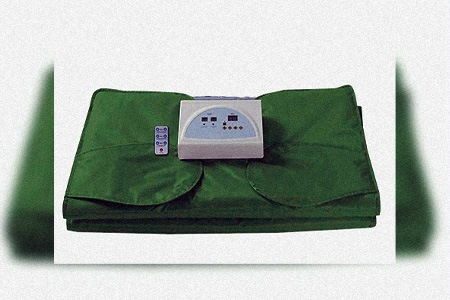
The next one on our list is a bit technological. It’s called the sauna blanket. In case you’re short in space and can’t get enough room to make your own sauna, then these types of blankets can get the job done for you.
Unlike the traditional saunas, it looks like a sleeping bag but still can reach an immensely high temperature within the shortest time. As it sticks to the body, you might feel a little intense compared to any regular saunas you’ve tried so far.
Types of Saunas to Achieve Calm At Home
It turns out that saunas are nothing but good stress relievers. With heat, the body releases endorphins that relax the user.
The ritual is also recommended for people with respiratory problems (asthma, bronchitis). Furthermore, the dilated pores also make it possible to cleanse the skin in depth.
Hence, take a trip to the sauna if possible before and during the winter, as this boosts immune defenses and helps fight viruses such as the flu. The aesthetics of the whole idea of saunas is also refreshing. From the different types of saunas mentioned above, try as many as you can and tick them off your bucket list.



